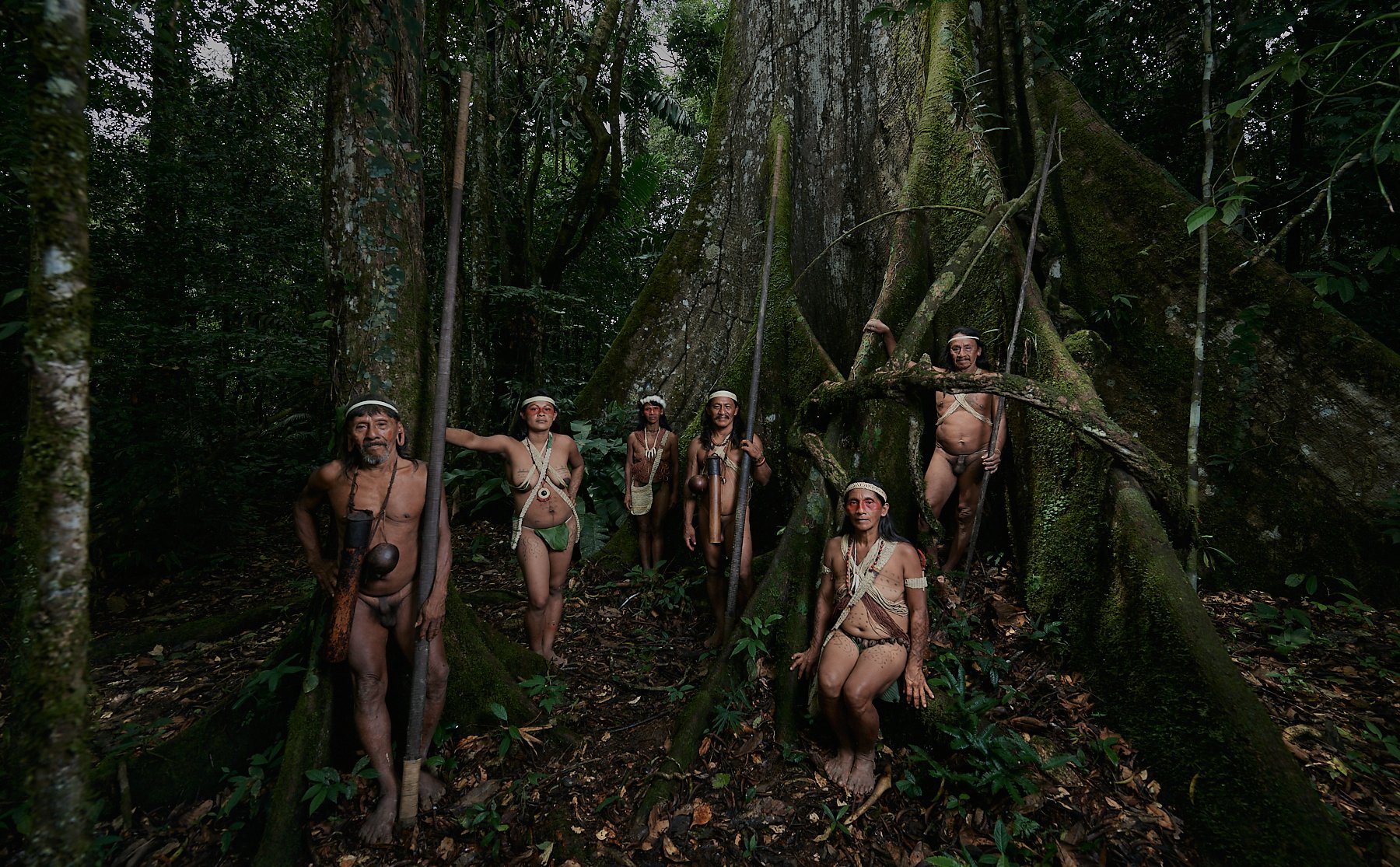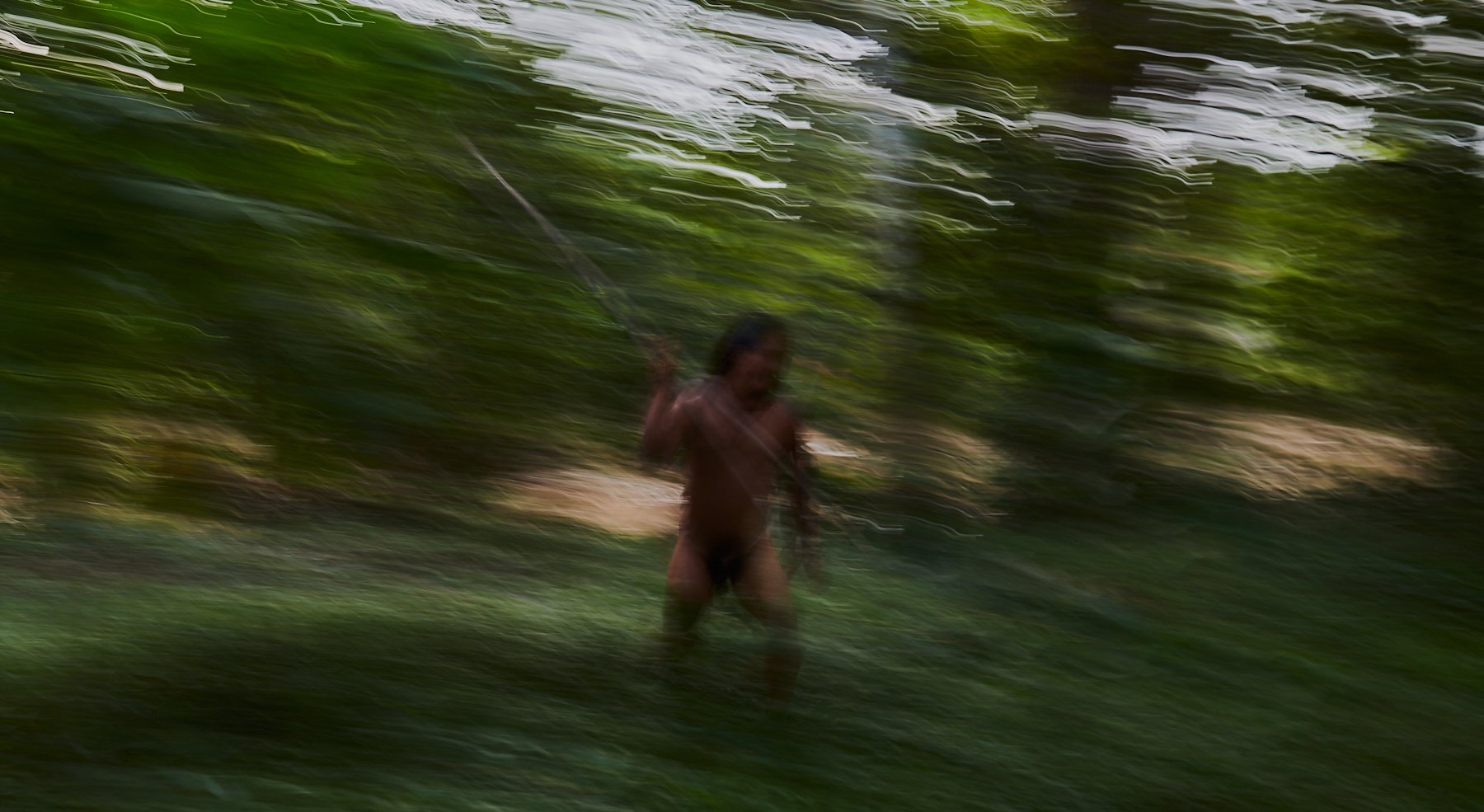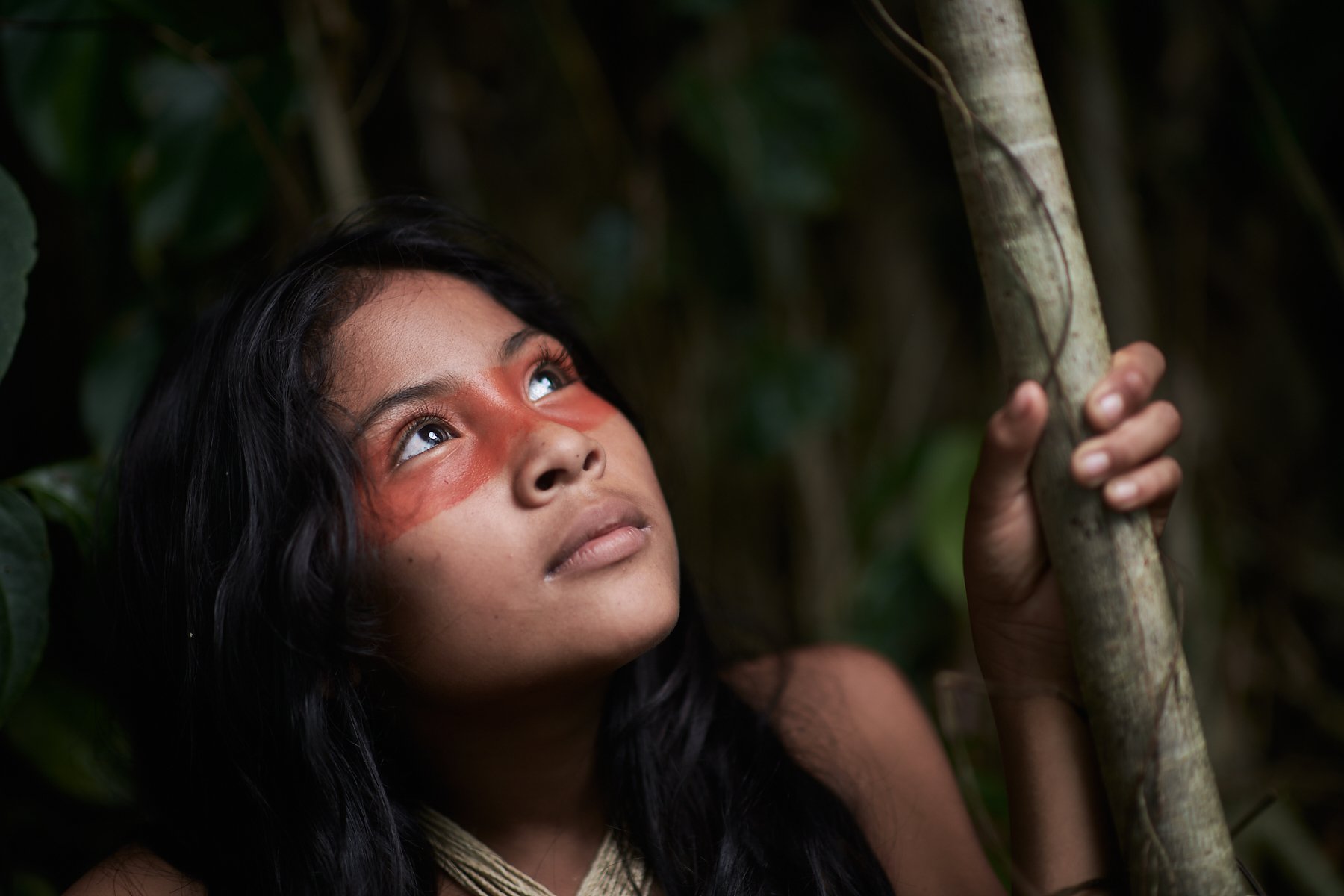There have been a number of articles and arguments lately on people attempting to visit and photograph remote, previously unreachable, tribes, be that in the Amazon or the Andaman Islands or any of the other places such tribes still live. The arguments against it are many but they essentially filter down to: “live them alone as the modern world will only bring about the destruction of their innocence and their way of life”.
There is a lot of validity in this argument - after all, let’s face it, anything the modern man touches turns to ash. While our “modern” world brings with it modern medicine, various conveniences, communications and access to a wider world, it also brings less desirable things like stress, anxiety, awful habits and, inevitable, a dilution of rare traditions and ways of life. This has been the case with every single tribe contacted by more “developed” (maybe the right word here is “modern”?) civilisations since the dawn of time. And herein lies the crux of the matter: contacting and eventually affecting these tribes is a matter of time - it’s not a question of “if”, but rather “when”, so what we should be asking ourselves is not whether we should leave them alone or not, but how we can protect their way of life when the time comes.
An aerial view of the Kona Nako river, a main tributary of the mighty Amazon
Few tribes know this better than the Huaorani. Originally comprised of literally hundreds of communities spread across most of southern Ecuador, Colombia and Peru, they have since been pushed, migrated and limited to a tiny area within southern Ecuador, the Yasuni National Park. Within the park the Huaorani have been trying to reset their lives (in a way) with powerful economic forces bearing down on them relentlessly. With corruption rife throughout South America, international petroleum and mining companies are taking advantage of politicians’ greed to continuously encroach into the tribal lands and with little to no oversight, plunder the natural wealth there. To them - and the politicians who enable them - the cost of a few tribes and their way of life is measured in percentages of daily oil output…that’s all. To a company set to make $100m a day, displacing or even totally exterminating an entire village is not that much different from us swatting a fly or an annoying mosquito.
But, this is the era of social media, of social responsibility, so none of these companies can, as easily, afford to be as callous or brutal as their predecessors (or even some of their Brazil contemporaries), so these days they use legal avenues to justify and legalise their practices. With respect to the Huaorani, they’re using a new approach, a relatively novel argument: they claim the Huaorani are not one tribe, but many, tiny - and as a result insignificant - tribal villages (or groups if you like) and as such do not qualify for tribal protection. After all, if you take a population for 10,000 and break it apart into 100 groups, each of them comprising of 100 people or less, each living 2hrs apart by plane, it’s hard to argue they deserve the same protection as a single unit, with shared beliefs, traditions and culture. As smaller groups they can be relocated or even ignored. The Huaorani community in Bameno is currently leading the fight against this.
The Huaorani live very close to nature and they have an amazing nature to live in
Led by Peinty, a wonderful, inspirational and forward-looking leader, this Huaorani community is actually inviting tourists (even going as far as providing a minimum level of “creature comforts” for them - more on this later), share with them their culture and, for photographers especially, is as accommodating as possible, in an attempt to inform the “outside” world of who they are, what their culture is, how unique and beautiful they are. And all that in a hope that some of us, when we return back to our homes we can become advocates of their uniqueness and supporters of their fight. It’s certainly a novel approach and one few remote tribes have dared to adopt. The result of Peinty’s approach are actually quite impressive (considering the logistical hurdles in putting them together):
photographers are now actively welcomed (probably more than other tourists) because Peinty understands - probably instinctively more than factually - the power of the image and even more the power of the social media photographers have access to.
the community has built basic wooden houses with internal partitions (let’s call them, for argument’s sake, rooms) and rough-made beds with western-style mattresses and proper mosquito nets to accommodate visitors. Do not imagine anything remotely luxurious - there are no windows and the huts still have traditional palm-frond roofs (which leak massively when it rains - and it rains a lot in the jungle) and they are hot in the day time and can be cold at night, but they are 100 times better than tents set up in the mud! and for the average photographer lugging around $20,000 worth of gear, this is invaluable.
there’s electricity for 2-3 hours a day, even if it’s limited to mostly sunny days as it relies on 6 solar panels installed a couple of years ago
when there is electricity there is even very limited wifi courtesy of a satellite internet connection. Now again, dont expect spectacular speeds or even massive reliability, but you can check your emails and maybe even limited social media. But hey, it’s there and it works (well, when it works)
when electricity runs, guest houses even have a semblance of a shower - cold, refreshing water from a pipe on the wall, but oh, so much better than wet wipes! Oh, and this means there is a flushing toilet as well!
there is a visitor-oriented communal area next to a makeshift kitchen where visitors can have their meals prepared by the absolutely awesome Tepena (a Huaorani local who is, by the way, an excellent cook)
So, not a 4-star resort this one, not by a long shot, but it makes visiting the Huaorani infinitely easier and, dare I say, enjoyable!
The Huaorani still hunt, daily, using traditional methods
Peinty these days is also working closely with two international NGOs and their international lawyers to establish a legal case stating that, despite living in dozens of relatively isolated communities, all the Huaorani are one people and as such deserve the full protection of their habitat and way of life. I was incredibly privileged to witness his numerous calls with the lawyers all the way from the US and saw the detailed notes Peinty was keeping for everything. He is an incredible example of a forward-looking leader, one using what he can from the outside world to protect and preserve his own, in a balanced, proportionate and appropriate way, one I feel works incredibly well.
Now, don’t get me wrong - getting to Bameno is no easy feat: you can either take the long and cheap way (2 days by car and canoe, a total of 18hrs on a wooden board on a bouncing boat, with an intermediate stop at a tented camp) or the shorter and more expensive way of flying in from Shell or Coca (flight is just about 1hr and 20 mins BUT flights only fly when the weather is perfect both at the source, the destination and the middle bits and, seeing this is the Amazon, this is never as guaranteed as it sounds - so do not be surprised if you have flights cancelled at the last moment or are severely delayed at a moment’s notice). But once you’re in Bameno, it’s absolute heaven.
There are risks (call them side-effects if you want) in this, for sure, and the community has already witnessed some of them: their teenagers now have mobile phones (even though their only contact with the outside world is very limited), they use more modern canoes with outboard engines and they do have shorts and t-shirts (albeit over their traditional attire - which in itself is pretty cool if you think about it) and, once a week or so, get some supplies flown in by plane (things like gasoline, kitchen utensils, milk and, funnily enough, bread - which is simply not something the Huaorani culturally make but have developed a taste for, most as a delicacy than a diet staple).
Younger Huaorani still balance, successfully in my opinion, modernity and tradition
But despite all these small “intrusions”, the community is still incredibly authentic: they still hunt almost daily for their meat using dart blowguns and wooden spears, they still grow their few crops around their homes, the women and children go fishing for catfish and piranha using fishing poles made out of palm branches. The men still wear a cotton string around their waist and they use it to secure their penis with and the women wear, mostly, traditional decorations and other elements of their attire. It’s almost as if the modern elements are afterthoughts and additions rather than replacements and it’s absolutely awesome to see. And more to the point, they are incredibly happy to work with photographers to create amazing images and once they understand your vision (assuming there is one ;-) ) they will go out of their way to share their culture with you and help you create truly memorable images.
I have to admit I’m a little on the fence about this approach. Yes it’s wonderful for us photographers - we can, without an enormous amount of hassle and, lets face it, discomfort, travel to truly remote places of the world, capture unique pictures and they will really authentic ones, much more than, for example, ones created in places like Ethiopia or Kenya and Tanzania. At the same time, for me - and that’s purely personal - seeing the Huaorani teenagers spending the 2-3hrs of internet on their phones listening to music (because that’s all they do - facebook and all that stuff are almost non-existent for them) makes me wince. But that’s just me - I can see them being happy to have access to pop music across the world and the sound of their laughter is absolutely lovely.
Overall, I have become a supporter of the Huaorani plight and will share their struggle with the world as much as I can, through my images and my network and Peinty’s approach has been instrumental in this so, on the balance of it all, I believe it can be instrumental in saving the Huaorani. I spent just 5 1/2 days with the Huaorani and they literally flew by - there was enough time to capture all the images I wanted (plus quite a few more which literally were borne out of the location and the people) and also relax a bit and unwind among truly nice and welcoming people.




